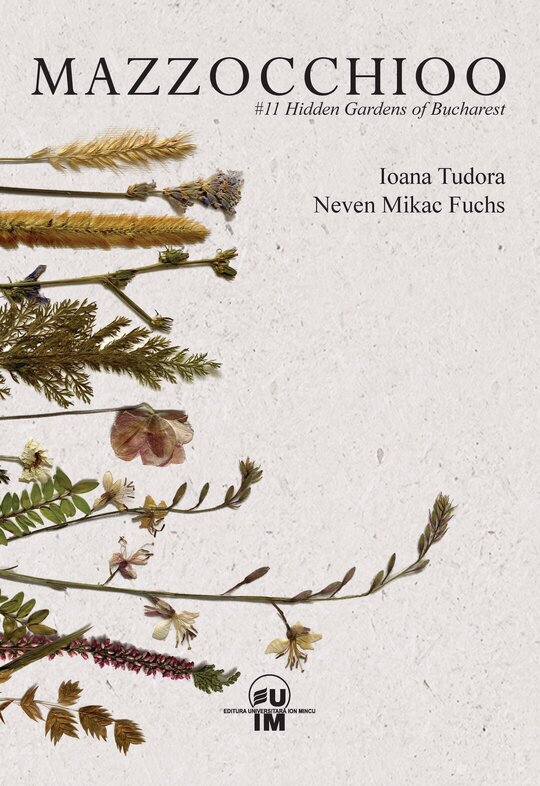MAZZOCCHIOO
Issues
On the 19th of October 2022, Valerio Olgiati received the Doctor Honoris Causa title of UAUIM after having given an insightful conference at the Romanian Athenaeum, in front of an audience of 700 students, teachers, and architects.
It happened 14 months after the initial idea of inviting him to Bucharest came through an email exchange I had with Markus Breitschmid, the author of Non-Referential Architecture, regarding possible academic collaborations. He let me know that Valerio Olgiati would be interested in coming to Bucharest for a second time.1 I wrote to their office2 and after a lengthy and precise discussion regarding context and details, the conference was on track. In collaboration with the Bucharest Territorial Branch of the Romanian Order of Architects, Mazzocchioo won a funding session from the Romanian Order of Architects that enabled the initiation of the actual organization of the conference.
Fading Borders is a curatorial project that brings into light the complex relationship of Migration and the City by presenting two in-depth studies: Away by TELELEU – a journalistic survey of the lives of Romanian migrants within various local European communities; and Shrinking Cities in Romania by IDEILAGRAM – an extensive research on the various forms of decline of Romanian cities, targeting a constructive understanding of the urban shrinkage as a vector for modernization and innovation. As a conclusion, MAZZOCCHIOO magazine deepens the debate by gathering a series of contributions from acknowledged architects answering the question:
How will Migration influence Architecture and the City?
MZCH # 6 is based on the academic study conducted in the academic year 2019-2020 in the UAUIM 3rd year studio coordinated by Ștefan Simion, Emil Burbea, Cristi Borcan.
Through survey, drawing, model and photographic documentary, the study focused on grasping the spatial, typological and ideological nature of nine high-schools inside the central ring of Bucharest, as well as the urban importance of these buildings in urban context: Cantemir Vodă, Gheorghe Lazăr, Gheorghe Șincai , Matei Basarab, Mihai Eminescu, Mihai Viteazul, Sfântul Sava, Central School, Miguel de Cervantes.
In the nineteenth century, the ideal city suddenly required remoteness, isolation from the new features of the metropolis dominated by industrialization: increased density, pollution, accelerated urban population growth and loss of the human scale of the urban territory. These desires have found echoes throughout the century through the establishment of thermal towns. Govora Baths is one of them.
MZCH#4 focuses on a historic neighborhood in the center of Bucharest in its attempt to see the true nature of the built heritage which cannot be conferred only by the extraordinary objects, those listed by the Ministry of Culture. The radical strength of the built heritage derives from the city itself, with its unpredicted development and the sometimes improvised buildings; and also and most important it grows out of that will of universality visible in many of its houses when the nobility of architecture is built into place: piano nobile, majestic entrances, elaborate attention to the details of the windows, profound and elegant vertical stratifications of the volumes. All these are part of the diffuse built heritage of the city, a quite, silent patrimony that isn’t always shining in the isolated architectural object, but in the confessed richness that the ensemble offers for inhabitation.
Issue 3 of Mazzocchio magazine brings to debate an archaeological research of the peculiarities of Bucharest markets: an analysis of their urban situations, physical characteristics and the architecture that hosts them, with a generous look at how this type of infrastructural architecture can become noble - the result of the student project that took place at UAUIM in 2017
The contemporary city is a collection of fake stabilities. All architecture (and consequently each built place) is the embodiment of a set of conceptions. Fake stability describes the condition of colliding ideologies in their built form. Its result is a territory freed of ideological load. This is the urban land of possibilities. It is both strength and weakness. In the urban realm, the fake cohabits with authenticity just as the permanence is measured by the ephemeral.
The 2nd of April 2017 marks 10 years since the death of Livio Vacchini (1933-2007). It is the moment of a retrospective look towards his architectural legacy. He was one of the masters of the so-called Ticino School, together with Mario Botta, Luigi Snozzi and Aurelio Galfetti. Even though they came to the public attention as representatives of an architectural school on the occasion of the famous 1975 exhibition ‘Tendenzen - Neuere Architektur im Tessin’, the work of Livio Vacchini stands as a unique way of conceiving architecture and cannot be comprehended by attributing it to a style, group or architectural movement. Vacchini places his thought in the space opened up by the greatest masters of architecture, from Louis Kahn and Mies van der Rohe and back to the architects of the ancient Greek temples, of the Pyramids and even of the Stonehenge.










